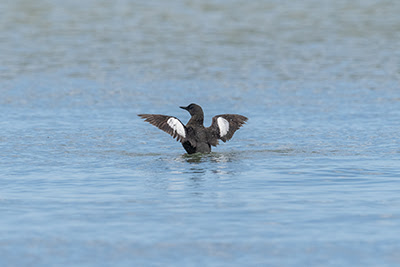In March this year 20 new nest boxes were installed around the golf course to replace the old ones installed in the early 2000’s that had not been maintained and many had fallen into disrepair. Many of the old boxes showed damage caused by Great-spotted woodpeckers who will open the entrance holes to eat the eggs and young. To combat this all the new boxes were fitted with a metal plate around the entrance hole. The new boxes were installed at around 2 m height to make checking and cleaning easier as it only requires small step ladder.
In early May I carried out an inspection of the boxes under licence from the British Trust for Ornithology (BTO). The nest boxes were recorded as a nest box scheme with the BTO and all the young birds ringed with a small metal ring with a unique alpha numeric combination.
Of the 20 boxes 15 were occupied and a total of 89 young Blue and Great Tits were ringed. Three boxes contained young that were ready to ‘explode’ so weren’t ringed. This is an anti-predator strategy as the youngsters disperse quickly when they feel threatened even though they’re probably not fully capable of looking after themselves.
Golf course nest boxes results
Box No. | Species | No. young | No. ringed | Comment | |
1 | Great Tit | 4 | 0 | To small | |
2 | Blue Tit | Unknown | 0 | About to fledge | |
3 | Great Tit | 9 | 9 |
| |
4 | Blue Tit | 11 | 11 |
| |
5 | - | - | - | Empty | |
6 | Blue Tit | 6 | 6 |
| |
7 | - | - | - | Empty | |
8 | - | - | - | Empty | |
9 | Blue Tit | Unknown | 0 | About to fledge | |
10 | Blue Tit | Unknown | 0 | About to fledge | |
11 | Blue Tit | Unknown | 0 | About to fledge | |
12 | Great Tit | 8 | 8 |
| |
13 | Blue Tit | 10 | 10 |
| |
14 | - | - | - | Empty | |
15 | Blue Tit | 12 | 12 |
| |
16 | Blue Tit | 10 | 10 |
| |
17 | Great Tit | 9 | 9 |
| |
18 | - | - | - | Empty | |
19 | Great Tit | 7 | 7 |
| |
20 | Great Tit | 7 | 7 |
| |
Total occupied | 15 | Total | 89 |
| |
The five empty boxes were all installed in clumps of trees dotted around the fairways and probably didn’t provide enough cover around them to attract the birds. These will be when the nest boxes are inspected and cleaned in the autumn.
Brood sizes in Blue and Great Tits are dependent on food availability and as the table shows there were some large brood sizes. Blue Tits generally always have larger brood sizes than Great Tits as reflected in the numbers. Both species rely very heavily on caterpillars, particularly those in oak trees, to feed their young. Last year was a disaster for many of our breeding birds with a very wet spring. Throughout the UK bird ringers were reporting broods abandoned and dead in the nest as the adults couldn’t get enough food for them. This year’s dry spring has meant a bumper crop of caterpillars and some good brood sizes.
Blue Tits and Great Tits, like many small birds, have large brood sizes as up to 70% of young birds will die in their first winter. Hopefully enough of these youngsters will survive to be recruited into the breeding population next spring. The average life span of adults is 3-4 years but the record longevity record for Blue Tit is 9 years and 10 months and for Great Tit 10 years and 5 months!
With two Barn Owl boxes and a Kestrel box already installed on the golf course and plans to create wildflower areas it's hoped to increase the biodiversity for the benefit of both wildlife and the playing members.












































































